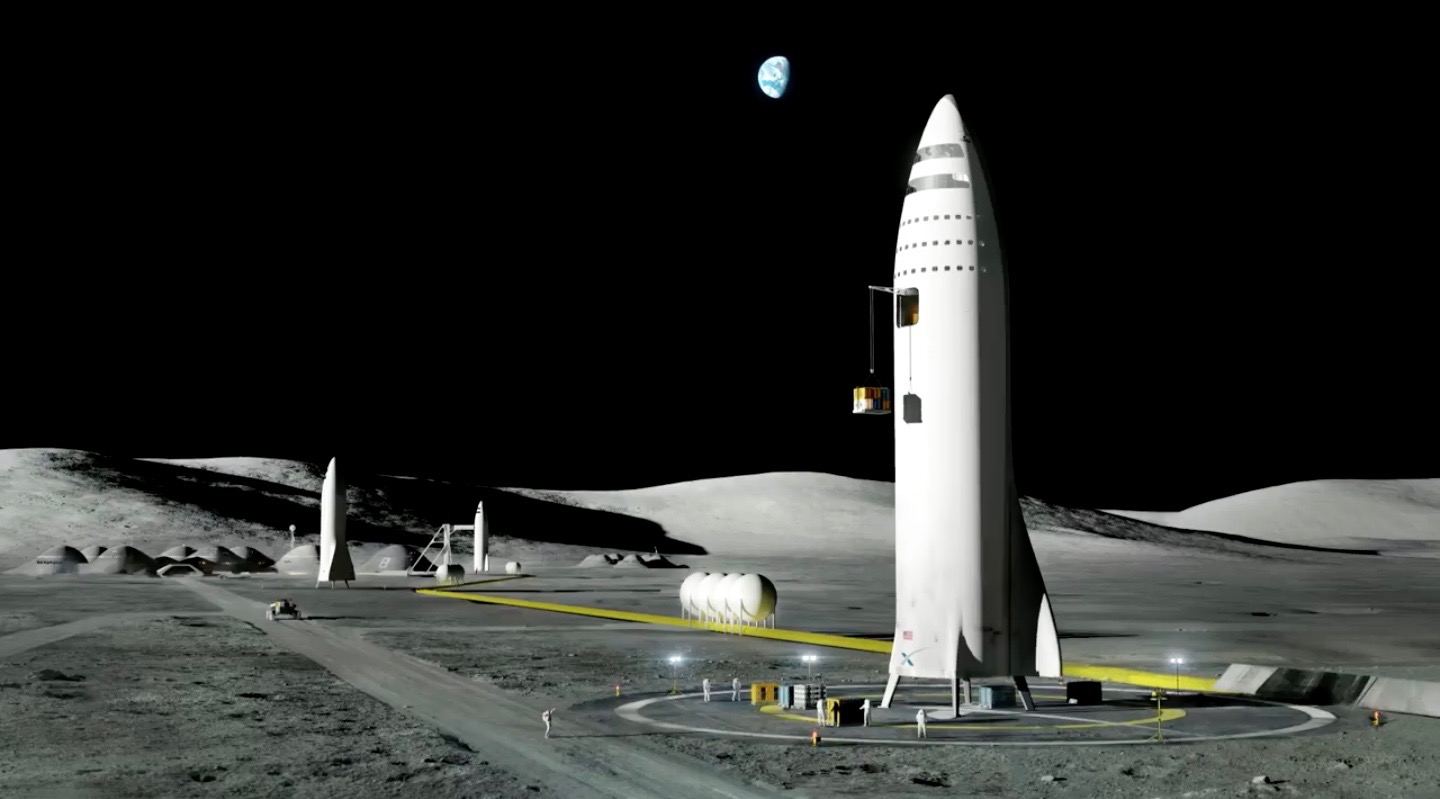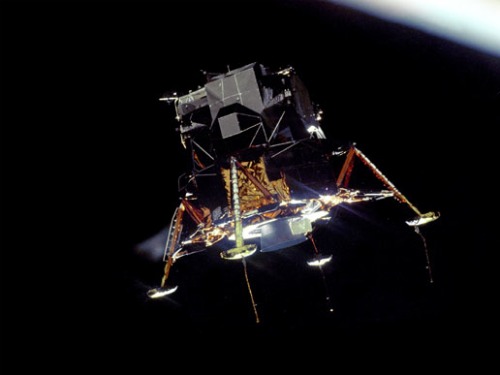Why the SpaceX Lunar Tourists Won't Walk on the Moon

So far in human history, 12 people — all men, all NASA astronauts — have walked on the moon. Twelve more people — again, all men and all NASA astronauts — have gone around it without ever setting foot on the surface. That second number may be set to climb, though, now that Elon Musk has promised to send Japanese billionaire Yusaku Maezawa and six to eight artists into orbit around our celestial neighbor aboard the SpaceX Big Falcon Rocket (BFR). (Musk previously promised to put a tourist around the moon by the end of 2018. This time, he said the ride will happen in 2023.)
Maezawa will pay for the pleasure cruise, with what is presumably a hefty chunk of even his multibillion-dollar fortune. But whatever sum he's paying (it has not been disclosed), it will buy him and his posse a rare view of the moon, but no landing or excursions onto the lunar surface.
That's because, as challenging as safely launching humans into lunar orbit is, it's essentially a matter of designing a crew vehicle that can keep people alive for the voyage and a descent back into Earth's atmosphere and building a rocket big enough to push it where Maezawa wants to go. [The BFR in Images: SpaceX's Giant Spaceship for Mars & Beyond]
Landing on the moon is a lot more complicated.
Why can't SpaceX just land its crew vehicle on the moon?
If you watched the Apollo landings on TV in the late 1960s and early '70s (or one of the movies made about them later), you saw that the Command Module — the ship that carried astronauts to and from lunar orbit — never actually landed on the moon.
Instead, each successful landing required two astronauts to clamber into the Lunar Module (LM) — a sort of lightweight, spacefaring dinghy — and ride it down to the lunar surface while a third astronaut waited in the module overhead. After each moonwalk, the astronauts would hop back into the LM and blast themselves back into space, where their third companion would pick them up for the ride back to Earth.
That wasn't always the plan, though. In the earliest days of the Apollo project, NASA engineers seriously considered trying to land the whole Command Module on the moon. But they soon realized that a Command Module capable of landing on the moon, blasting back off into space, propelling itself back to Earth and surviving re-entry would have to be impractically gargantuan, even by Apollo mission standards.
Get the Space.com Newsletter
Breaking space news, the latest updates on rocket launches, skywatching events and more!
SpaceX's BFR is set to be more powerful than the Apollo missions' Saturn V rocket, but not by much. The company released a promotional video in early 2018 showing a simulated BFR crew vehicle landing on the moon like this, but released no technical information suggesting that it's actually overcome the technical challenges involved.
NASA, of course, gave up on the project of overcoming those challenges in the 1960s. Thus, the idea of a disposable, ultralight lander for moonwalks was born.
Why can't SpaceX build its own lunar lander?
Actually, in theory, there's no obvious, overwhelming reason SpaceX couldn't do this. The company has, after all, managed plenty of tricky Earth landings that NASA couldn't have dreamed of in the 1960s. And Musk has claimed — whether sensibly or otherwise — that his company will one day land people on Mars.
But the reality is that, if history is any guide, designing and building a lunar lander is an entirely separate project that represents a good chunk of the cost of building a rocket that can get to the moon in the first place.
Between 1963 and 1973, NASA's Lunar Module program cost $2.24 billion, compared with the Command Module's $3.73 billion and the Saturn V's $6.42 billion. Adjusted for inflation, the lander cost about $17 billion in 2018 dollars. Its design, as lead engineer Thomas Kelly recounted in a 2012 book about the effort, was a matter of endless downsizing to make the module lightweight enough for the journey.
The original design for the lander, Kelly wrote, involved a seated cockpit with wide, glass viewing windows, so the astronauts could watch their descent to the lunar surface in all its panoramic glory. By the time they had the thing stripped down for its first uncrewed flight aboard Apollo 5 in January 1968, it included just a single, little, triangular window and clip-in cable hoists, in place of seats, to keep the astronauts standing. By the time NASA conducted a crewed test with a lunar module in low Earth orbit aboard Apollo 9 in 1969, the astronauts had named it "Spider," thanks to its alien, many-legged appearance.

That lander design carried just two astronauts at a time to the moon, though later models did manage larger cargo loads. A SpaceX lander would presumably have to safely ferry its entire paying passenger complement to the lunar surface, in at least marginally more comfort and safety than NASA's cable hoists and stripped-down navigational and docking systems offered.
And that gets to the biggest obstacle preventing SpaceX from giving its passengers a real lunar excursion.
In the end, the problem is the people
If SpaceX's goal were to explore the moon, which at least nominally was NASA's goal in the '60s and '70s, then the company might have more options. Highly trained, expert astronauts can ferry themselves around in limited craft that require everyone on board to contribute to the project of landing, exploring, launching and docking — all while peering through a tiny, triangular window to find their way.
But no matter how much training SpaceX's passengers receive before their trip, they won't be there as space pilots, nor experts in the operation of spacesuits or other technical procedures involved in the landing. That means that if SpaceX were to attempt to put people on the moon, they would essentially be dead weight, along for the ride and taking up space while expert astronauts and automated systems handled the many technical challenges.
That means that a theoretical SpaceX tourist lander would have to carry far more bodies, likely in more comfort and safety, than one carrying a NASA-style pared-down crew of experts and equipment there for scientific research. So, instead, the tourists will at best be left up in space, where they can enjoy looking down at the moon but won't have much to do in the way of groundbreaking exploration.
Originally published on Live Science.
Join our Space Forums to keep talking space on the latest missions, night sky and more! And if you have a news tip, correction or comment, let us know at: community@space.com.

Rafi wrote for Live Science from 2017 until 2021, when he became a technical writer for IBM Quantum. He has a bachelor's degree in journalism from Northwestern University’s Medill School of journalism. You can find his past science reporting at Inverse, Business Insider and Popular Science, and his past photojournalism on the Flash90 wire service and in the pages of The Courier Post of southern New Jersey.











